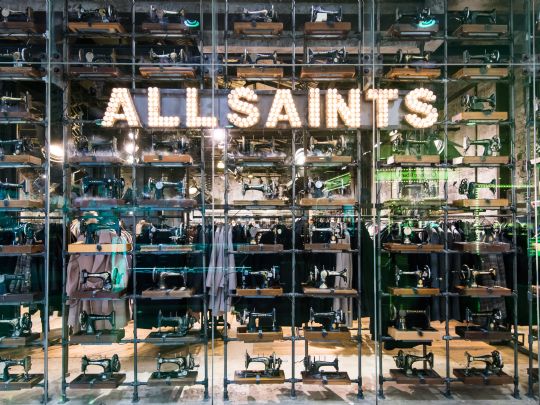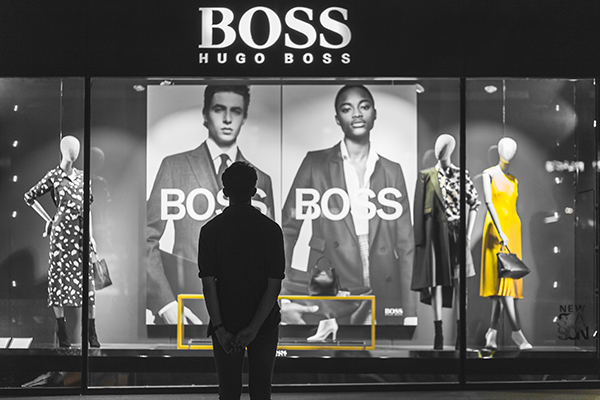For some, 2009 has been all about slashing IT budgets and weathering the storm of the worst trading conditions in living memory. But for others it has been about planning ahead, investing in and reaping the benefits of the multi-channel/cross channel revolution. Scott Thompson reports.
2009 has been the year that m-commerce and social networking finally made their mark on retail. A sizeable gap has opened up between the conservatives who continue to carp from the sidelines about a lack of immediate results and the progressives who see that purchasing patterns are changing whilst personalising services and channels for customers helps to deliver the type of shopping experience they want.
Over 20 per cent of UK mobile users now use their handset to access the internet, according to recent research by Nielsen. Just as the broadband explosion was the driver for the e-commerce channel to really take off, so the arrival of smartphones such as the iPhone has created a browsing experience that enables consumers to fully embrace the mobile online world. Meanwhile, in the social networking arena sites such as Twitter have enjoyed spectacular growth and in the retail sector there have been some interesting developments from the likes of Asda (YourAsda) and Burberry, which launched a site dedicated to its famous trench coat.
"The year has been pretty significant in terms of smart phones clearly becoming a force to be reckoned with. The number of applications available on the iPhones in particular is astonishing. The impact on consumer behaviour is likely to be profound in the medium term," says Chris Barling, CEO at EPoS and e-commerce specialist, Actinic. "At the same time, the dramatic rise of Facebook has continued, and Twitter has also seen a phenomenal adoption rate. These are consumer services, and consumers are spending ever larger amounts of time on them. This presents a significant opportunity for online retailers who manage to get into the vanguard of works in the new social networking space. To put things in context, Facebook, which started around six years ago, has just added an extra 100 million users in nine months. It took TV 13 years to reach just 50 million users."
Jon Parry, a principal in Capgemini UK's Consumer Products and Retail division, says that retailers will increase their presence on social networking sites and use this to interact with customers to drive traffic to their sites. "This enables customers to better engage with retailers or their favourite brands where and when they want. For example, Burberry now runs a successful Facebook page which has around 700,000 friends - this has enabled them to share content and further engage consumers with the brand beyond just selling products. 2010 will continue to see more retailers broaden their online offering to encompass social networking. The successful retailers in 2010 will create online environments (host) that customers may want to join or be a welcome party within their social network structure (sponsor or contributor)," he says.
Although a little scary for some companies, there's no ignoring it..the beginnings of how the new consumer will interact with the new retailer have now appeared. "Social media is already mainstream. Every retailer has a strategy for Twitter and Facebook, and if they don't, they should! The exciting news for 2010 is the next evolution for how customers work together, which is likely to include simple Facebook apps such as local car sharing, and possibly more complex apps that might enable discount bulk buying between a group of users," says Cyrus Gilbert-Rolfe, head of retail, media and entertainment at EMC Consulting, which specialises in information infrastructure solutions. "Another key social media app is 'right to reply' technology or feedback platforms, where customers have the opportunity to express an opinion on product quality or customer service in a public way. This technology is being adopted by some brands in a very open and unmoderated way - Charles Thyrwitt is a good example - and by the end of 2010 this change to how e-commerce sites work will be expected by consumers to be everywhere."
The multi-channel adventure
The last 12 months have seen retailers continue to put increased focus on integration across channels to provide a seamless and consistent customer experience, with varying degrees of success. "2009 has definitely been the year of discovery and learning with many retailers planning their multi-channel strategy and journey into the next decade," says Tony Bryant, business development manager at multi-channel solutions provider, K3. "We are seeing less of the traditional 'rip and replace' ERP strategies but more of a carefully considered view on 'single versus several' systems implementation - get the right platform in place and then a retailer has a choice of the point solutions available and more importantly can deploy a strategy and journey as they learn more about the impact of online has on sales and the operation."
This is a brave new world for retailers and putting the right strategy in place costs money - more often than not, lots of it. But weighty technology budgets have not been the order of the day in the last 12 months. "Retailers will continue to find the going tough but will increasingly look to other opportunities to maximise trade in-store by enabling customers to place orders through web kiosks or for the store staff to place orders for customers through an in-store order system," says consultant, Martin Newman, who has been involved in multi-channel retailing for over 25 years having had P&L responsibility for retail, direct mail, e-commerce, kiosks and call centre channels for such retailers as Ted Baker and Harrods. "This will drive incremental revenue by enabling customers to order products out-of-stock in-store, sizes not available in-store as well as providing the convenience of the customer having their order delivered to their home."
Multi-channel is a very complex and diverse topic and one that many retail businesses still don't fully understand. But things are changing, albeit slowly. "Almost all our customers have a multi channel strategy for 2010. Rather than just talking about it they have firm plans to provide a seamless customer experience across all channels they operate in," notes Andrew Walker, CEO at e-commerce specialist, Portaltech.
Damp squibs
Although some retailers were able to gain a modicum of comfort from reduced rents and the VAT reduction, fuelled by the recession and a lack of consumer confidence, there were several casualties in 2009, with a number of High Street brands disappearing. Ten per cent of retailers closed between January and September this year, according to figures issued by the Local Data Company. From a survey of 251,462 firms across over 705 centres across the UK, 25,090 closed. In London alone, 7,628 firms shut their doors in the first nine months of the year.
"There is no doubt that the biggest damp squib has been the VAT reduction and the general failure of a seriously lame duck government to engage with the retail industry - and indeed any other industries - about the issues which are critical to them. The yearnings of business folk for a government that doesn't praise them one minute and undermine them the next are very strong," says Professor Merlin Stone of WCL, specialists in change management and customer, citizen and stakeholder management.
Not that it's been all doom and gloom, with Stone singling out business intelligence software as a plus point. "From the point of view of technology, the steady onward march of improved business intelligence has for me been a highlight, with most major software vendors offering greater and greater opportunities for retailers to know where they are making money - by the minute, and for suppliers of goods sold through retailers to be armed with the same quality of information. Information is power must be the phrase of 2009."
Whilst Andy Piscina, UK country manager at multi-channel commerce and communication software vendor, hybris, comments: "The silver lining in 2009 was that some retailers managed to capitalise on the recession and gain market share from both online and bricks and mortar retailers who had to close down. The upside of this silver lining is yet to play out in the retail technology sector as the consolidation and expansion will only now, and continuing into 2010, drive projects and investment in new technology."
During the second half of the year, there have been signs that some degree of consumer confidence is returning, whilst online retail has continued to thrive, albeit registering less spectacular growth rates than in previous years. Recent figures from Marks and Spencer, for instance, show a 29 per cent increase in online sales year-on-year in the first six months of its financial year.
"The first half of 2009 saw most retailers focusing on internal cost control mechanisms to protect margin rather than investing in expanding their online business. As a result, the technology sector serving the retailers had an extremely stagnant market with budgets on new investment pretty much frozen across the board," observes Piscina. "The second half of 2009 has been somewhat more optimistic with the overall recession easing and the cost control measures paying off. Studies indicate that many retailers have seen increased conversion rates for the first half of 2009 over the same period last year (The State Of Retailing Online 2009: Profitability, Economy, And Multi-channel - Forrester). Against this backdrop the retail technology market is seeing increasing levels of activity with budgets opening up again and talks resuming on how to move online businesses forward in 2010."
Capgemini UK's Parry feels that a highlight of 2009 has been Web 2.0 technologies improving consumers' online experience. "The increased use of these technologies is improving the customer experience online and making it easier to choose. 2009 has seen an increase in use of these technologies in the clothing sector - where 360 degree rotating images, zoom functions, 'look books' and 'drag and drop' functionality are just some of the innovations that make it easier to choose products which might historically have required a trip to the High Street. These technologies have also contributed to a much more enjoyable and engaging experience for shoppers, contributing to an increasing amount of time being spent online."
At the same time, Martin Newman sounds a note of warning. "As a result of the lack of growth in the retail channel and due to the continued growth in sales and profitability from the online channel, there's been more emphasis placed on the web and e-commerce this year," he argues. "However, the focus is still too much on purely viewing the web as an incremental revenue stream as opposed to a driver of sales for all channels of the business. If there were was more focus on the cross channel piece and the value of having a single customer view and a consistent experience across all touch points, then the thinking around structure, strategy, business intelligence and technology would be very different."
A year of two halves, then. Multi-channel and online have provided rare bright spots. And whilst tough times have seen many companies cut IT budgets, technology vendors will inevitably benefit from the recovery in the spending plans of their clients as risks are seen as less severe. As EMC Consulting's Gilbert-Rolfe puts it: "While the economy is in freefall, there has been a predictable response from retailers to batten down the hatches and lock down capital spending and IT investment. While this may have been a short-term solution, it means that many retailers will have to invest more heavily in the long-term to streamline their infrastructures and make their information stores more manageable."
All in all, it should be a fascinating start to the 'tweenies'.
Latest News
-
Currys upgrades payment technology to enable AI-powered shopping experiences
-
Waitrose pledges new ‘market leading’ welfare standards for charcuterie
-
Ocado ends tech exclusivity agreement in ‘most markets’
-
Asda announces new group CIO
-
What’s next for retail in 2026?
-
The most read Retail Systems stories of 2025
Beyond Channels: Redefining retail with Unified Commerce
This Retail Systems fireside chat with Nikki Baird, Vice President, Strategy & Product at Aptos will explore how unified commerce strategies enable retailers to tear down these barriers and unlock new levels of operational agility and customer satisfaction.
The future of self-checkout: Building a system that works for consumers and retailers
In this webinar, industry leaders discussed what the future of self-checkout looks like and how retailers can make the technology work for everyone.
© 2024 Perspective Publishing Privacy & Cookies










Recent Stories